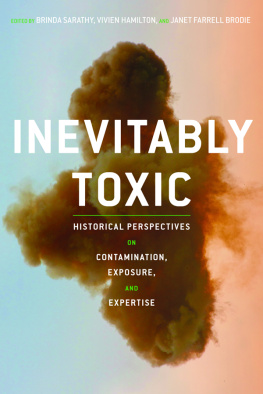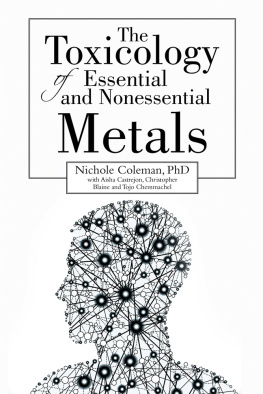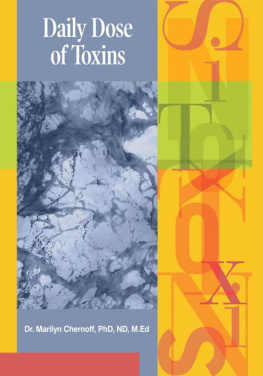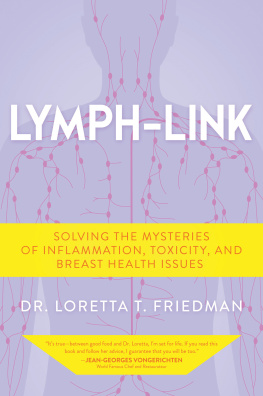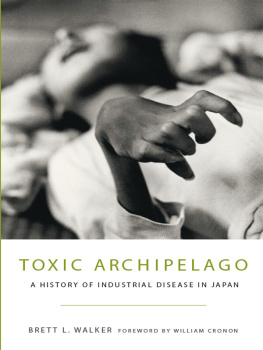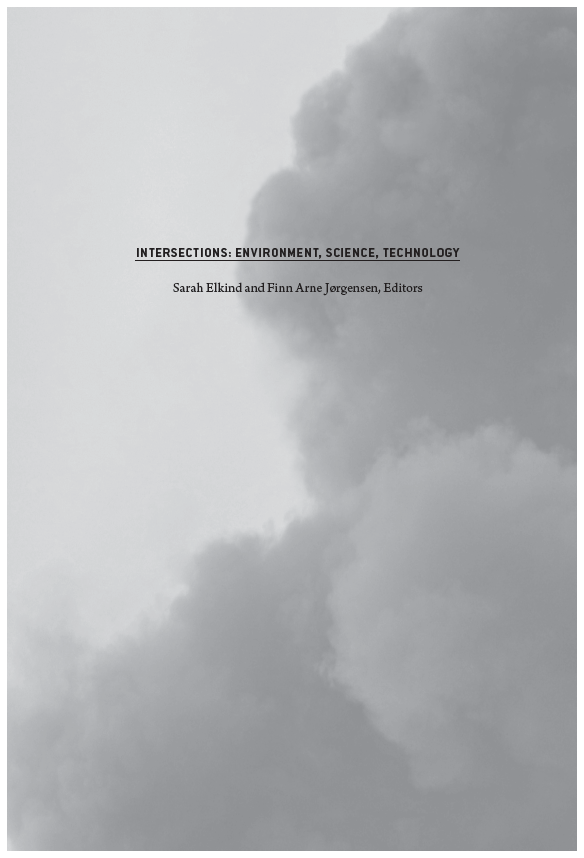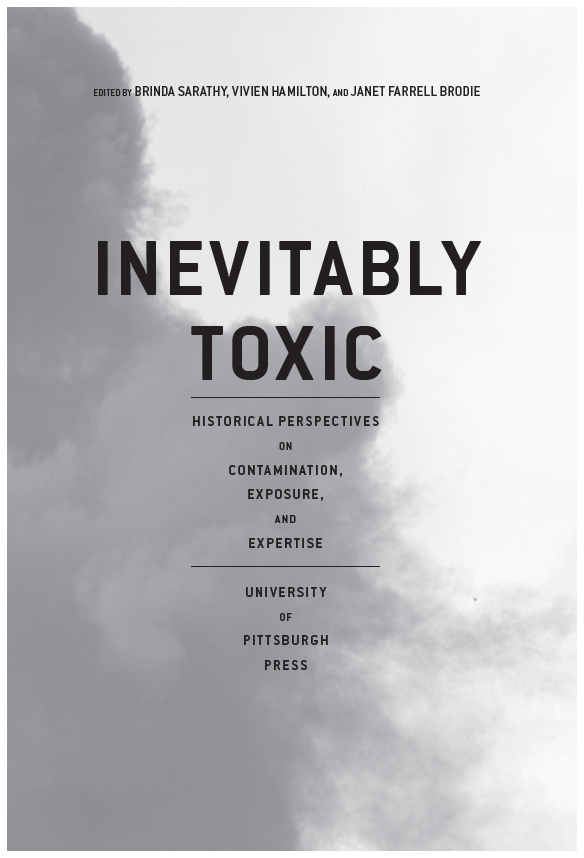Acknowledgments
The initial spark for this project came out of a reading group on Science, Expertise, and Environment that we organized along with Pey-Yi Chu at Pomona College. Our first thanks go to the Hixon-Riggs Forum for Responsive Science and Engineering at Harvey Mudd College for funding this reading group, which provided such a fruitful space for interdisciplinary conversation with colleagues across the Claremont Colleges. Brinda and Vivien would especially like to thank Janet for bringing us together in the first place. Claremont isnt big, but making these kinds of connections across the colleges takes effort, and we are grateful for Janets vision and initiative.
Early drafts of most chapters in this volume were presented at the Contested Expertise, Toxic Environments (CETE) workshop held in Claremont in fall 2015. Papers were precirculated and received written feedback from each participant prior to the meeting. We are grateful to workshop participants for their rich and engaged discussion of the essays. The chapters in this volume are absolutely stronger as a result of those conversations.
As part of this workshop, we invited the wider Claremont Colleges community to an evening screening of Containment by Peter Galison and Robert Moss. Afterward, we had the great pleasure of having Peter Galison Skype in for a conversation with the audiencea call he made from an abandoned parking lot in Maine well past midnight. Everyone on our end appreciated the extra insight and inspiration from this shared dialogue. Thank you, Peter! This public event was generously funded by the Harvey Mudd College Center for Environmental Studies.
The biggest source of funding for this project came from the Bradshaw Fund of the Claremont Graduate University (CGU) School of Arts and Humanities. We are deeply grateful for this financial support, which allowed us to bring together scholars for the 2015 CETE workshop and which has funded the costs associated with the publication of this volume. Additional funds for the index were provided by the Faculty Research and AwardsFund at Pitzer College and the Department of Humanities, Social Sciences, and the Arts at Harvey Mudd College.
Thank you to Debbie Laird in the Department of Humanities, Social Sciences, and the Arts at Harvey Mudd College for assisting with catering and facilities logistics for the CETE workshop.
Finally, a huge thank-you to CGU graduate student Hillary Kirkham for her help keeping us organized, overseeing planning for the workshop, and staying in touch with authors throughout rounds of revision and editing. We truly could not have done this without you.
Introduction
Toxicity, Uncertainty, and Expertise
Vivien Hamilton and Brinda Sarathy
Almost every year, students taking environmental justice at Pitzer College go on a toxics tour of their backyards in the Inland Empire of Southern California. This trip usually includes a visit to the Stringfellow Acid Pits, Californias first site to be designated as a Superfund in 1983. of this volume), students anxiously anticipate seeing for themselves what this toxic disaster zone actually looks like. When they get to the site, however, most students are taken aback. It is not what they expected. There are no open pits of discolored or smoldering liquids; there is no acrid smell in the air. There are not even any noticeable signs alerting them to the contaminated landscape upon which they stand. Some students note that they have driven past Stringfellow on various occasions but would never have guessed that this barren canyon on the side of the highway has a history of contamination by chemical wastes. At the end of the day, one of the most impactful lessons for the class is that toxic environments are often invisible or appear innocuous, and that such spaces are more prevalent in our day-to-day lives than we either know or care to admit.
The questions that haunt students after a visit to the Stringfellow site are the questions that motivate this book. To what extent do we know about the processes resulting in contaminated places like Stringfellow, and do we, in fact, even recognize such spaces for what they are? How is it that toxic environments have become so pervasive while at the same time remaining invisible, overlooked, or ignored? Why do conditions of normalized toxicity fail to rouse mass outcry? Numerous scholars from a broad range of academic disciplinesfrom environmental history to public health, from sociology to geography, and from science and technology studies to environmental philosophyhave tackled such questions in their rich and diverse writings on toxic environments. This substantive and growing body of interdisciplinary scholarship, however, tends to be written by and for the consumption of other academics, who are themselves experts in their fields and who engage around toxicity through shared theoretical concepts. As academics ourselves, we use these kinds of intellectual frameworks in our own research and analysis.
Yet, as professors of the liberal arts, we are also keenly aware that there is a broader audience to be engaged. In tackling the emergence of toxic environments in multiple sites across the twentieth century and into the twenty-first, we have therefore purposely written this book for a nonexpert audience. For us, this has meant limiting academic jargon, clarifying terms when they are used, and imbuing theory implicitly into the very telling of our stories. We have often found compelling storytelling to be the most effective means of capturing our students imaginations and sparking critical conversations. We hope that by conveying histories of toxicity in this intellectually rooted and evocative manner, a broader audience will be similarly engaged.
The stories in this volume draw attention to a diverse set of toxic spaces in the United States, Canada, and Japan, spaces filled with x-rays, nuclear radiation, industrial waste, pesticides, and other chemical contaminants.Given the often-imperceptible nature of these agents, our first goal with this collection is simply one of illumination. Taken together, these chapters show us the ways in which exposure to toxicity has become routine, as toxic spaces have become increasingly interwoven into the economic structures and fabric of everyday life. Even more, these stories demonstrate that the burden of exposure continues to fall disproportionately on those already marginalized by class, race, and structures of colonization. Illuminating this reality, however, is just the first step. Our ultimate hope is that uncovering the histories of these spaces will make complacency impossible.
Given the pervasive nature of toxic spaces and the urgent need for action, it might be surprising that most of the work in this book is historical rather than contemporary. Why examine x-ray rooms in the 1920s or pesticide use in the 1970s when we need to address water contamination from fracking right now? If we know the current state of contamination at the Stringfellow site, why delve into archives to pull out debates and decisions that are over half a century old? We suggest that this kind of historical analysis is powerful precisely because it disrupts the sense that our current predicament is inevitable. Understanding how it is that these spaces came into being can help us identify contemporary institutions as well as modes of thinking and acting that continue to allow environments of toxicity to persist. This seems especially urgent given the current political climate of deregulation in the United States, in which calls to grow the economy have become routine and are decoupled from any meaningful analysis of the ecologically unsustainable, socially exploitative, and violent processes through which capitalist relations operate. Careful historical analysis can illuminate these realities and inspire us to see how we can intervene to stem the tide of toxic spaces now and in the future.

